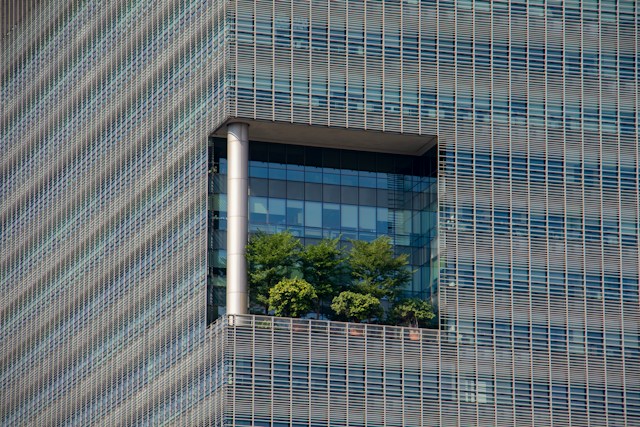In an era where sustainability takes center stage, the construction industry faces distinctive challenges and opportunities. The need for environmentally friendly buildings has never been higher. Governments, businesses, and individuals alike are calling for greener methods that reduce waste and energy consumption, and have a less detrimental impact on the environment.
In response to this demand, the industry is shifting towards eco-friendly construction materials. But how do these materials affect construction costs and the durability of buildings? To answer this question, let’s delve into the world of sustainable construction and examine the impact of using green building materials.
Cela peut vous intéresser : What are the ethical implications of AI-driven decision-making in healthcare?
Exploring Green Building Materials
Green or eco-friendly building materials are those that make optimal use of resources while causing minimal harm to the environment. They’re designed to replace traditional building elements, often being made from recycled or renewable resources, and crafted to be long-lasting and energy-efficient.
From recycled steel to bamboo, and from sheep’s wool insulation to cork flooring, these sustainable alternatives are increasingly finding their way into buildings worldwide. However, the upfront costs of these materials, their durability, and their impact on long-term savings are still a topic of debate within the industry. Let’s dive into each of these aspects to gain a clearer understanding.
En parallèle : Chalet real estate, a profitable and sustainable investment
The Cost Factor: Green vs Traditional Materials
The cost of construction materials is a significant determinant of the overall cost of a project. In the past, eco-friendly materials often came with higher price tags than their traditional counterparts. This was due to the technology and processes involved in producing these innovative materials, and the fact that the demand for them was not as high as it is today.
However, the landscape is changing. As the industry progresses and the demand for sustainable materials grows, the costs of eco-friendly options are gradually decreasing. Moreover, tax incentives and grants available for green construction projects can further offset the higher upfront cost.
In the long term, the choice of green materials can lead to significant energy savings. They often offer better insulation than traditional materials, reducing energy costs for heating and cooling. Plus, they require less maintenance, which can save on repair and replacement costs over a building’s lifespan.
Durability: How Long do Eco-friendly Materials Last?
Durability is a crucial factor when choosing construction materials. A durable material reduces the need for frequent repairs or replacements, contributing to the lifespan of a building and reducing its environmental impact.
Many eco-friendly materials prove to be highly durable. Recycled steel, for example, has the same strength and longevity as virgin steel. Additionally, it requires fewer resources to produce and can be recycled indefinitely without losing its quality.
Similarly, cork and bamboo have shown to be highly resilient, competing with traditional hardwood in terms of durability. Other materials like sheep’s wool insulation not only provide excellent thermal and acoustic insulation but also have a long lifespan, reducing the need for replacement.
Impact on the Environment: The Role of Green Materials in Reducing Carbon Footprint
The construction industry is a significant contributor to global carbon emissions. By opting for green materials, the industry can significantly reduce its carbon footprint.
Green construction materials are often produced using less energy-intensive methods than traditional materials. This results in fewer carbon emissions during their production. Moreover, many of these materials are sourced responsibly, minimizing the environmental impact of extraction.
Additionally, the enhanced energy efficiency of eco-friendly materials reduces the buildings’ operational carbon emissions. They help maintain a steady indoor temperature, reducing the need for artificial heating and cooling, and thus, energy consumption.
The Effect of Green Materials on Waste Reduction
Waste reduction is another critical aspect where green building materials come into play. The construction industry is notorious for producing a significant amount of waste. However, sustainable materials can help counter this issue.
Many eco-friendly materials are produced from recycled content, turning waste into valuable construction resources. This not only reduces the demand for virgin materials but also helps keep waste out of landfills.
Moreover, many green materials are recyclable themselves, meaning they won’t end up as waste at the end of their life. Instead, they can be turned back into valuable resources, creating a circular economy within the construction industry.
In conclusion, the shift towards eco-friendly building materials is not only beneficial for the environment but has a far-reaching impact on construction costs and building durability too. As we move forward, it is anticipated that the adoption of these green materials will continue to rise, paving the way for a more sustainable and responsible construction industry.
The Impact on Indoor Air Quality: Healthy Buildings with Green Materials
One of the less discussed, but equally significant, benefits of using eco-friendly building materials is their potential to improve indoor air quality. Traditional building materials often contain synthetic compounds and chemicals that can release harmful toxins into the air over time. This phenomenon, known as off-gassing, can lead to a variety of health issues ranging from allergies to respiratory problems.
On the other hand, green materials are often free of these harmful substances. For instance, natural wool insulation doesn’t contain any synthetic fibers or binders, and cork flooring doesn’t emit volatile organic compounds (VOCs) like traditional vinyl flooring. Moreover, materials such as bamboo and recycled steel don’t off-gas, making them safe choices for construction.
Furthermore, some green materials have unique properties that can actively improve indoor air quality. For example, certain types of clay plaster can absorb and neutralize indoor pollutants.
Using these eco-friendly building materials can create healthier indoor environments, especially crucial in residential buildings where people spend most of their time. This added health benefit further enhances the appeal of sustainable construction, making it not just an environmentally sensitive choice but a human-friendly one as well.
The Shift to Sustainable Construction: Will it Continue?
The adoption of eco-friendly building materials has been steadily increasing in the construction industry, thanks to their myriad benefits. Despite their initial higher costs, these materials have proven their worth in the long-run by offering energy savings, improved durability, enhanced indoor air quality, and substantial reduction in environmental impact.
While it’s true that the initial investment for green building materials is often higher than that for traditional ones, the lifecycle cost analysis shows a different picture. When you factor in the long-term energy savings, lower maintenance costs, increased lifespan of the building, and the potential health benefits, the cost difference narrows significantly.
Moreover, with continuous technological advancements and increasing demand, the production cost for sustainable materials is expected to decrease, making them even more accessible. Additionally, the growing awareness about environmental issues and increasing regulatory support are likely to fuel the trend towards sustainable construction.
In the face of these benefits and trends, it’s safe to say that the shift to sustainable construction is not just a passing fad. It is a necessity, an obligation towards the environment and future generations. It represents the future of the construction industry, a future that is not just about building structures, but about building a sustainable world.
In conclusion, eco-friendly building materials have a significant impact on construction costs and durability. While they may require a higher initial investment, their long-term benefits make them an economically wise choice. Moreover, they contribute immensely to reducing the construction industry’s carbon footprint, enhancing indoor air quality, and promoting waste reduction. As we continue to grapple with environmental challenges, the importance of these green materials cannot be overstated. The future of construction lies in sustainable materials and practices that lessen our environmental impact, and it is a future we must embrace.






